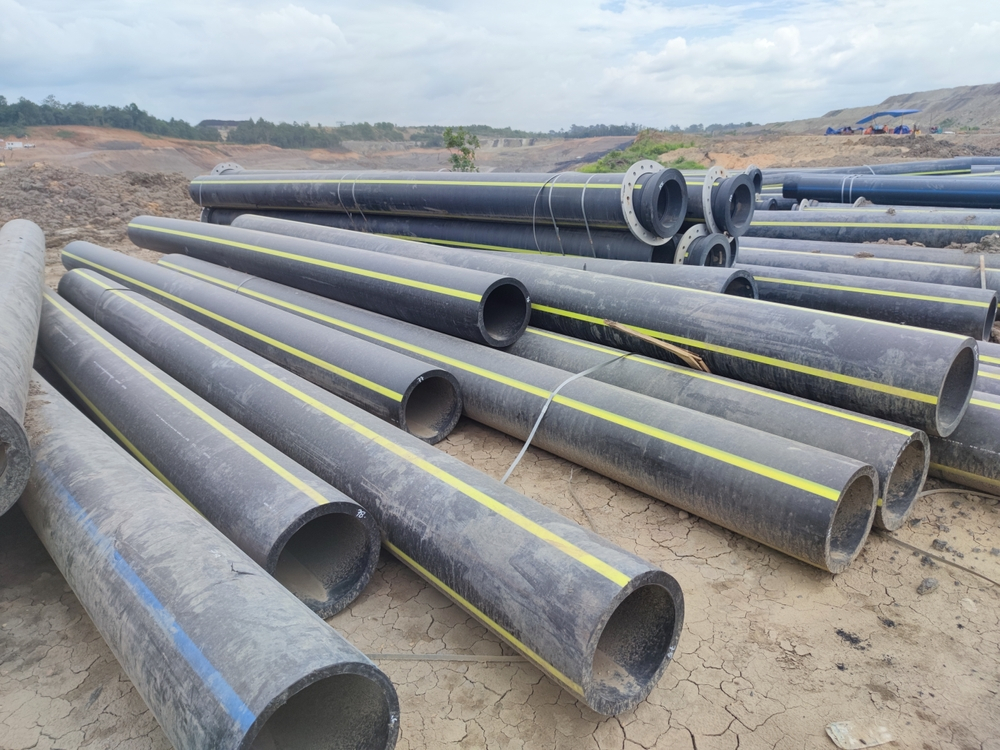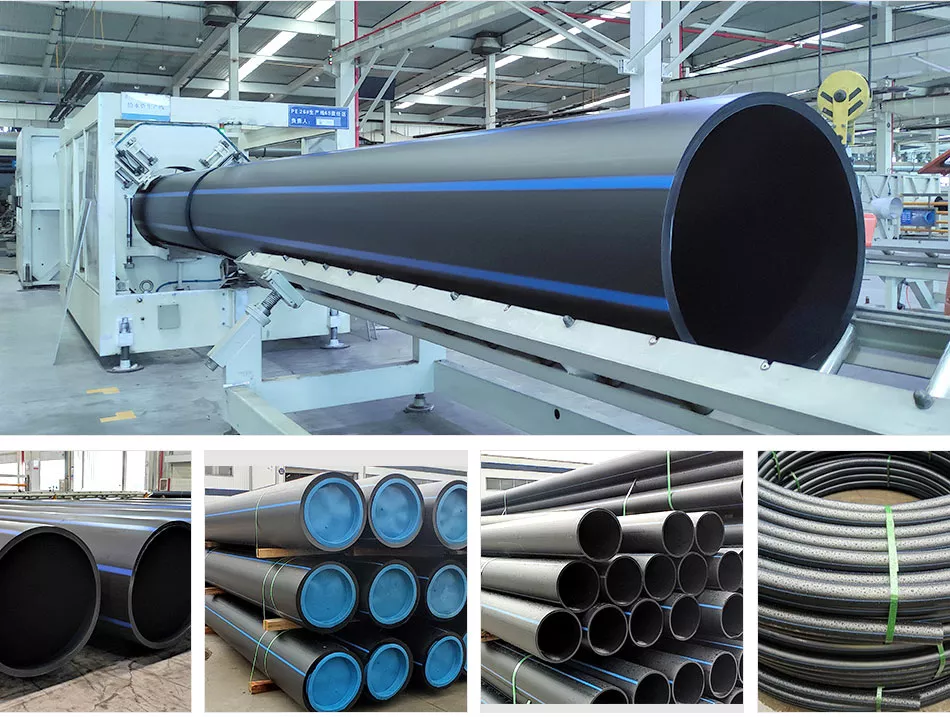How American Plastics LLC Texas Enhances Project Efficiency With Quality Pipes
Discover the Best Choices for Your Next Task With Quality Pipe Products
Picking the right pipe materials is essential for any type of job. It entails understanding various materials and their certain applications. Top quality plays an important duty in efficiency and long life. Variables such as compatibility, availability, and cost likewise need consideration. Making notified choices can significantly affect the outcome of a task. What are the most effective choices to check out, and how can one guarantee they are making the right decisions?
Understanding Different Sorts Of Piping
When starting on a pipe or construction job, comprehending the various types of pipelines available is essential. Different materials offer unique purposes, making it important to choose the right kind for particular applications. PVC pipes, recognized for their light-weight and corrosion-resistant residential properties, are frequently utilized for water drainage and watering. Conversely, copper pipelines offer sturdiness and excellent thermal conductivity, typically preferred for supply of water lines. For gas distribution, black iron pipelines are a standard choice as a result of their toughness and resistance to high pressure. In Addition, PEX (cross-linked polyethylene) pipes have acquired popularity for their flexibility and convenience of setup, particularly in property plumbing. Each pipe kind has unique qualities that affect its performance and suitability for various environments. Experience with these alternatives aids ensure that jobs satisfy safety criteria and useful needs, inevitably adding to the success of any type of pipes or construction venture.
Secret Factors to Think About When Choosing Pipeline Products
Picking the appropriate pipe supplies calls for mindful factor to consider of a number of crucial factors that can substantially affect the task's outcome. Initially, the specific application of the pipes need to be analyzed; various jobs might require differing levels of durability, versatility, and resistance to temperature or stress. Next, compatibility with existing systems should be examined to facilitate seamless combination and protect against future issues.
Expense is one more significant aspect; budget plan constraints may dictate the selection of suppliers and products. Furthermore, the availability of products can influence the timeline of the job, making it vital to choose easily offered options.
High quality ought to not be ignored, as substandard products can cause issues and boosted maintenance costs. Ultimately, local building codes and laws must be thought about to verify conformity and security requirements. By considering these factors, individuals can make enlightened choices that enhance the success of their tasks.

Comparing Products: PVC, Copper, and PEX
Choosing the suitable products for pipeline products is important for guaranteeing a task's success, and 3 preferred options often considered are PVC, copper, and PEX. PVC (polyvinyl chloride) is lightweight, immune to rust, and affordable, making it ideal for various applications, particularly in drainage and watering systems (American Plastics LLC Midland). However, it can be much less resilient under severe temperatures
Copper pipelines are renowned for their durability and integrity, providing exceptional thermal conductivity and resistance to bacteria. Although a lot more pricey than PVC, their longevity commonly justifies the financial investment for plumbing applications.

Applications for Various Pipe Types
Recognizing the unique applications of different pipe kinds is important for enhancing task outcomes. PVC pipelines are extensively utilized in drainage, waste, and vent systems due to their longevity and resistance to corrosion. Their lightweight nature makes them simple to install and deal with. Copper pipes, known for their integrity and durability, are commonly used in plumbing and heater. Their ability to endure high temperatures makes them suitable for warm water lines. PEX pipelines, with their versatility and resistance to cold, are optimal for residential pipes applications, enabling much easier installment in limited rooms. Additionally, stainless steel pipes are usually used in industrial settings where high stress and temperature level resistance are needed. Each pipe type offers details features, and comprehending these applications assists in making notified decisions for various projects, guaranteeing effectiveness and effectiveness.
The Significance of High Quality in Pipe Supplies
Quality in pipe supplies straight affects the success of various jobs, affecting both performance try here and long life. High-grade pipelines resist corrosion, stand up to pressure, and maintain structural honesty in time, making them important for ensuring security and performance in pipes, construction, and industrial applications. Substandard products can cause leaks, failings, and costly repair work, eventually compromising job timelines and budgets.
Top quality pipes boost the general capability of systems, whether they are delivering water, gas, or other materials. They add to perfect circulation prices and decrease the danger of contamination, which is specifically important in safe Click This Link and clean water supply. Purchasing high quality pipeline supplies not just fulfills regulative requirements but additionally sustains sustainability by decreasing waste via long lasting efficiency. As an outcome, selecting credible vendors that focus on top quality can substantially influence the resilience and integrity of any type of project, developing a solid structure for future procedures.
Tips for Keeping Your Pipes
Regular maintenance is important for protecting the integrity and functionality of pipelines in any type of system. To ensure peak performance, one effective approach is to perform regular examinations, looking for indications of wear, rust, or leaks. Maintaining pipelines tidy and free from particles can stop obstructions, which commonly cause push build-up and possible tears. It is also suggested to keep an eye on water high quality, as contaminants can harm pipe products with time.
In addition, preserving appropriate temperature level degrees is crucial; severe fluctuations can trigger products to increase or contract, bring about splits. For systems with exterior piping, shielding pipes against winter can stop cold and subsequent ruptureds. Ultimately, documenting upkeep activities and repair services helps track the problem of the pipes and aids in future preparation. By complying with these pointers, individuals can substantially extend the life expectancy of their piping systems, assuring trusted operation for several years to come.

Where to Find Trustworthy Pipe Vendors
Preserving pipelines effectively usually begins with sourcing products from credible distributors. Reliable pipe distributors can be located through numerous networks, including online directory sites, trade convention, and market organizations. Online systems like Alibaba, ThomasNet, and neighborhood business directories offer substantial lists of vendors with consumer evaluations and scores, assisting buyers assess quality and dependability.
In addition, checking out profession shows enables straight communication with providers, allowing project stakeholders to examine products firsthand. Networking within industry organizations can additionally result in valuable suggestions, as professionals often share their experiences with various vendors.
Regional equipment shops and plumbing supply shops are exceptional sources, particularly for those looking for instant assistance. It's vital to ask about qualifications and guarantees, guaranteeing that providers follow sector criteria. By discovering these avenues, people can identify reliable pipeline providers that meet their job's details demands.
Often Asked Inquiries
What Are the Typical Dimensions Offered for Different Pipeline Kinds?
Typical pipeline sizes differ by kind; for instance, PVC pipes commonly can be found in 1/2", 3/4", and 1" sizes, while steel pipes might vary from 1/8" to 36". Choice depends upon certain application needs.
How Do I Know if My Pipes Are Correctly Installed?
To determine if pipelines are correctly installed, one ought to look for safe and secure fittings, appropriate alignment, and lack of leakages - American Plastics LLC HDPE Pipe Supplier. Furthermore, seeking advice from setup guidelines and looking for expert examination can ensure adherence to safety and performance criteria
Can I Mix Different Pipeline Materials in One System?
Mixing various pipeline products in one system is usually not recommended due to prospective compatibility concerns, such as varying thermal development prices and chemical reactions. Appropriate fittings and adapters may minimize some risks, but care is recommended.
What Safety and security Precautions Should I Take When Dealing With Pipelines?
When dealing with pipelines, one must use safety goggles, handwear covers, and discover this appropriate apparel. Validate appropriate air flow, use tools properly, handle materials very carefully, and comply with producer directions to avoid mishaps and injuries throughout installation or repair work.
Are There Eco-Friendly Pipe Options Available on the Market?
Yes, environment-friendly pipeline alternatives are readily available, consisting of those made from recycled products, eco-friendly plastics, and sustainably sourced wood. These choices reduce ecological effect while offering sensible options for different construction and pipes jobs.
The particular application of the pipes have to be analyzed; different tasks might require differing levels of adaptability, resistance, and sturdiness to temperature or stress. Choosing the appropriate products for pipe products is vital for guaranteeing a project's success, and 3 prominent options usually thought about are PVC, copper, and PEX. Understanding the special applications of various pipe kinds is vital for optimizing task outcomes. Top quality in pipe products directly influences the success of various tasks, affecting both efficiency and longevity. Common pipeline dimensions vary by type; for example, PVC pipes commonly come in 1/2", 3/4", and 1" diameters, while steel pipes may range from 1/8" to 36".